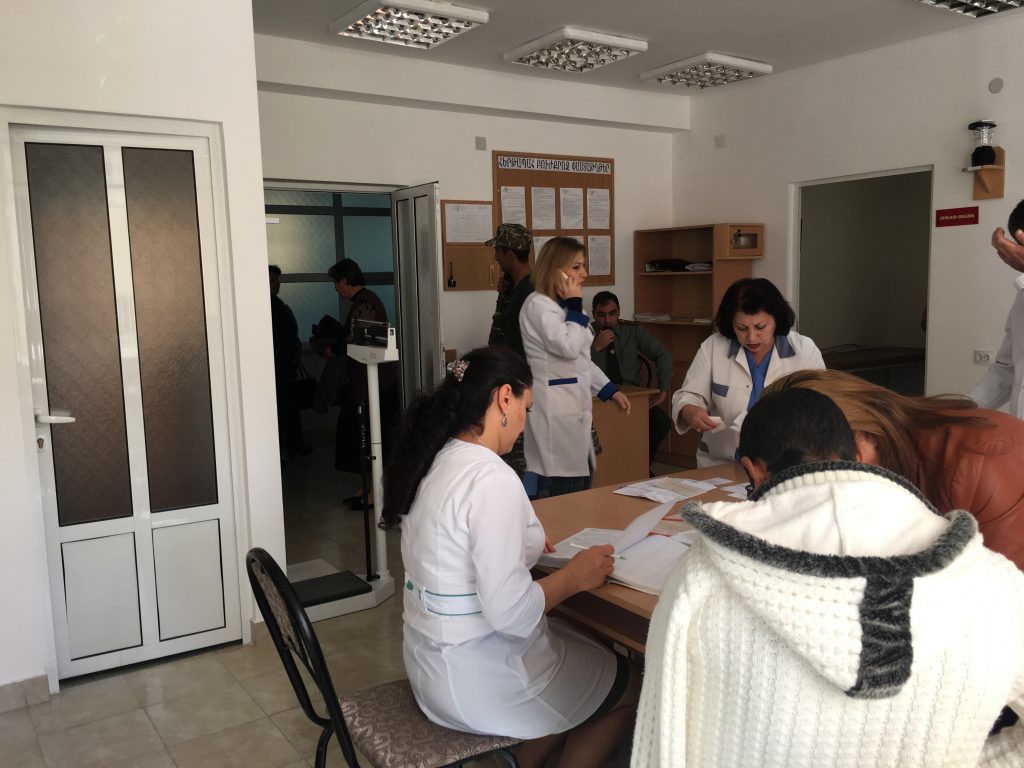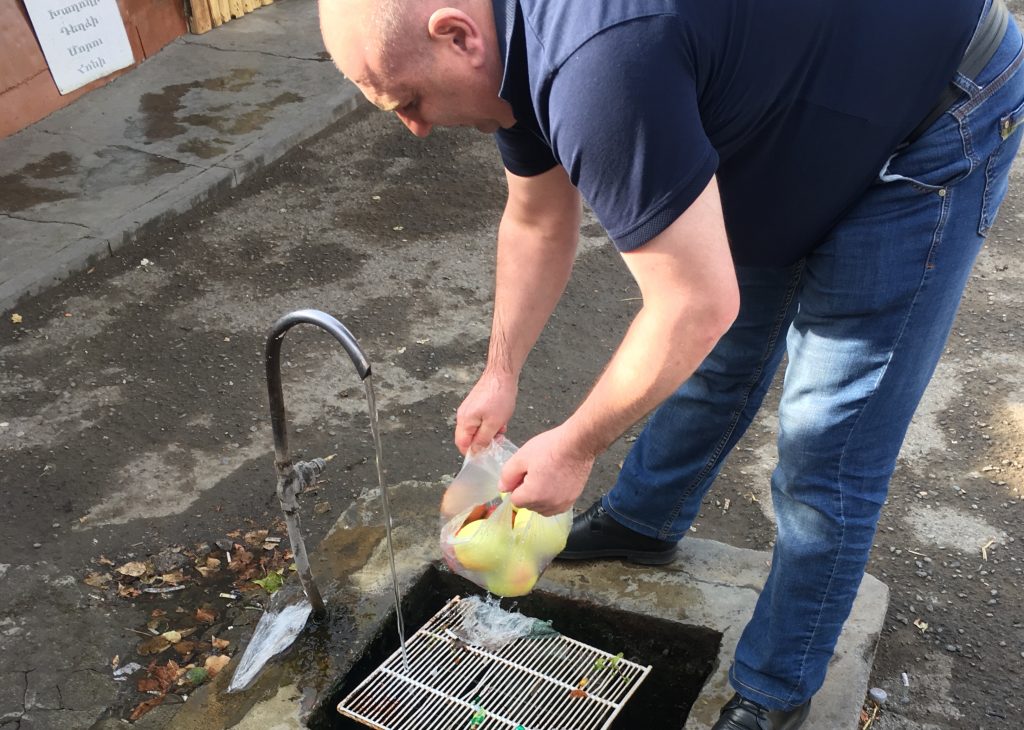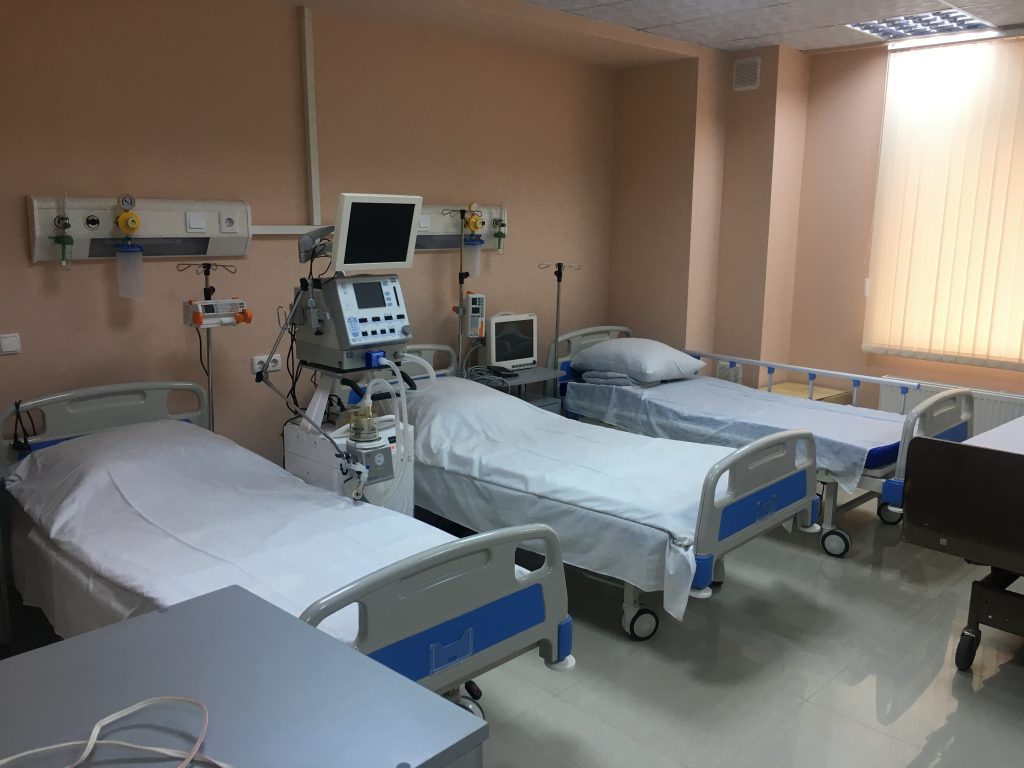

When it comes to care, the Netherlands still has a way to go. But compared with some other countries in the world, the conclusion is that we are not doing so badly after all. We are keen to share our expertise and experience with a view to improving the care provided in other countries as well – free of charge. Why? Because we embrace corporate social responsibility. Which brings us to our current activities in Armenia. And we can learn a thing or two there as well. Such as how to provide care with heart and soul.

Armenia is a country where the sun shines three hundred days a year, where children dance in the streets with their grandparents to celebrate a city’s anniversary and where no meeting of more than a couple of hours is complete without something to eat and drink.
Armenia is also a former Soviet state which is recovering from communist structures and corruption. The country is on constant military alert because of the conflict with neighboring country Azerbaijan about the enclave of Nagorno-Karabakh. As a result, it has more military hospitals – a total of five – than one would expect for a country that is even smaller than the Netherlands, with about 3.5 million inhabitants.
While in the Netherlands it’s the individual who comes first, in Armenia it’s the group.
Some cities have two hospitals: a civilian hospital and a military hospital. Civilians are welcome in the military hospitals too. Which they are all too happy to use, because the quality there is generally higher and the care more affordable. Seen through Dutch eyes, it can be quite a surprising world: X-ray machines that are more than thirty years old, photos of war heroes on the wall. But one also sees some very modern facilities, and many areas are manned by extremely warm and friendly staff. And then there’s the hospital director who buys apples for everyone on his way to work and washes them under an outside tap… doctors and nurses who also work at the weekend and above all: genuine interest in patients, in each other and in us. While in the Netherlands it’s the individual who comes first, in Armenia it’s the group. Togetherness: that’s what it’s all about.

The national health and defense ministries want to boost the efficiency and quality of care by combining military and civilian hospitals. We analyzed exactly where there is potential for improvement and made recommendations on how that can best be achieved.
We had a look around six hospitals to form our first impression. What really stood out – besides the warm and friendly atmosphere – was how calm and peaceful everything seemed. With few patients and lots of staff, sometimes even more doctors and nurses than patients. We discussed this observation with the directors. But they saw things quite differently. They explained that it was not an easy job and that they did actually feel a lot of pressure.

Everyone experiences pressure in their own way. Which is why we gathered data on the number of nurses, doctors and patients per month over the past two years. This showed that there were fewer and fewer patients in many areas. And that the number of staff in some hospitals remained the same. Besides data on hospitals, we also analyzed the rules and regulations for instance, such as the ratio between the number of doctors and the number of beds. Our findings showed that many hospitals had an excess of beds, with a low bed occupancy rate: sometimes about 50%.
We saw that doctors and nurses were indeed busy, mainly with paperwork. Every prescription requires the completion of loads of forms, each of which must be stamped and signed.
How can the directors possibly feel under pressure if the numbers tell a different story? So, we went back to the hospitals with this question; but this time we wanted to get the story behind the numbers. We saw that doctors and nurses were indeed busy, mainly with paperwork. Every prescription requires the completion of loads of forms, each of which must be stamped and signed. Staff also spend a lot of time on patients who walk in without an appointment.
Room for improvement was identified in two areas: the structure around the daily work and the reduction of paperwork. The hospitals had entire units that operated without a schedule. That makes it difficult to plan their work properly. Doctors said as well: ‘When I look at what occupies my time, I see that my day almost never goes as planned.’
The hospitals are as busy as can be, but not just with providing care. And that has implications for not only costs but also quality. A doctor who does not treat enough patients will fail to build up the necessary routine and experience. We issued clear and well-founded recommendations about how the Armenian hospitals could kill two birds with one stone through their mergers: higher quality at lower cost.
We worked on this study with great devotion. At the same time, our help was hugely appreciated by the doctors and the management, which was expressed through the many toasts to our work. Next year, we will be training a local team of young professionals to run the project under our supervision. At cost. Because that, too, is what corporate social responsibility is about.